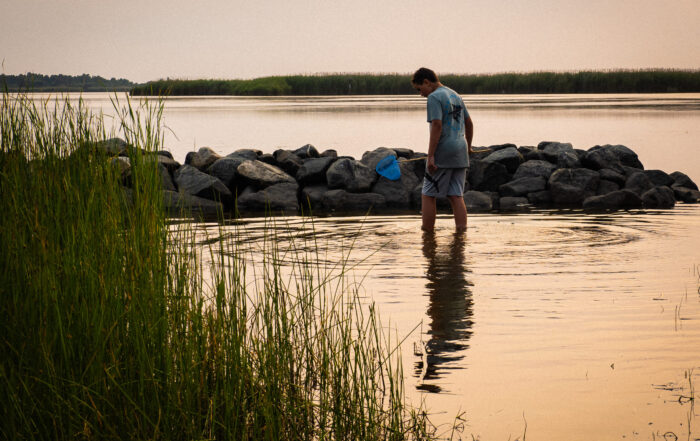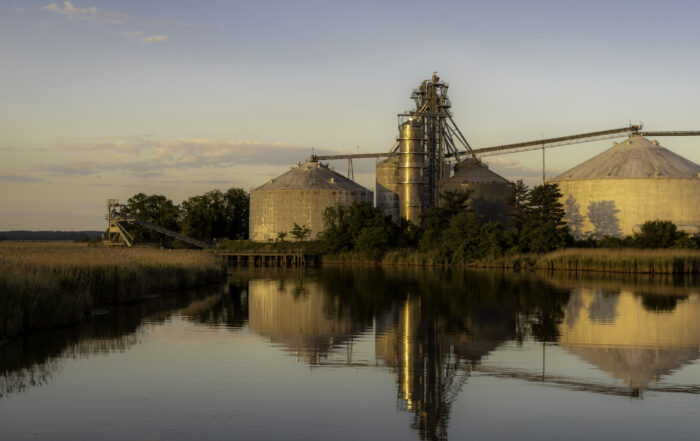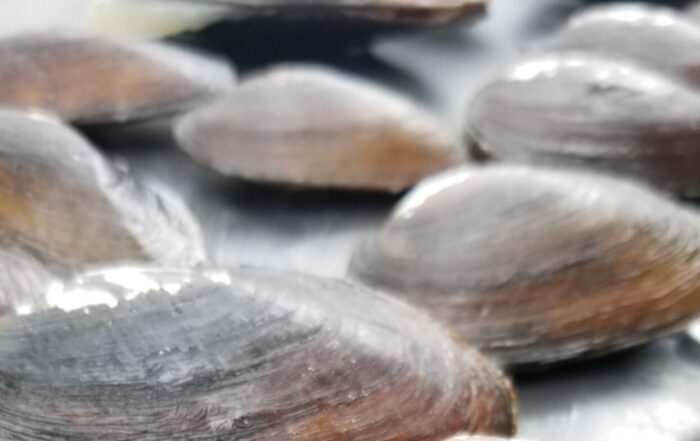Opinion: Meeting 2025 bay cleanup deadline depends on Northam, Youngkin
In an Opinion-Editorial, Virginia Conservation Network’s Senior Land & Water Conservation Policy Manager, Pat Calvert, discusses the steps Virginia’s next governor needs to take in order to meet the 2025 Chesapeake Cleanup deadline. See the Op-Ed in the The Virginian-Pilot, published on November 27th, 2021.


An aerial view looking from the Guinea section of Gloucester past Point Comfort and out into the Chesapeake Bay. Photo by Rob Ostermaier, Daily.
In 1998, the EPA listed the Chesapeake Bay as “impaired” and required Virginia to go on a “pollution diet,” or as the plan is more eloquently called, the Chesapeake Bay Total Maximum Daily Load (TMDL). The bay TMDL — the largest such cleanup plan ever approved by the U.S. Environmental Protection Agency — sets a “total maximum daily load” or a limit on nitrogen, phosphorus, and sediment pollution necessary to meet water quality standards in the bay and its tributary rivers.
Virginia and our neighboring Chesapeake Bay watershed jurisdictions were provided a deadline of 2025 to execute scientifically based plans to equitably and measurably reduce these dangerous pollutants from entering our creeks, rivers, and the bay. And as it turns out, the final four years to achieve the Chesapeake Bay TMDL fall under Gov.-elect Glenn Youngkin’s term.
A restored Chesapeake Bay will make Virginia a more desirable and healthier place to live, work and play. The commonwealth is the largest seafood producer on the East Coast, with 50 commercially harvested species. Our outdoor recreation industry is booming, providing 197,000 direct jobs and $1.2 billion in tax revenue. A healthy Chesapeake Bay is critical for our state and local economies by supporting tourism, outdoor recreation, fisheries, aquaculture, and other water-oriented economic development in the Hampton Roads region and beyond.
There is a continuing, multi-year and bipartisan effort underway to attain the bay cleanup plan by curbing key pollutants from entering the Chesapeake Bay. Virginia governors have been following the bay’s Watershed Implementation Plan, aka the “Bay WIP” or “cleanup plan,” for decades, working across party lines to successfully achieve the bay TMDL.
Congress recognizes its role and the critical need for strong funding to restore the bay. Supported by members of both political parties, the U.S. House increased the EPA’s funding for the Chesapeake Bay Program by $238 million over the next five years.
Now it’s Virginia’s turn. While the Chesapeake Bay 2025 TMDL deadline will fall under Youngkin’s term, Gov. Ralph Northam is not off-the-hook. This December, Northam has the opportunity to put a bow on his bay protection legacy through a proposed budget that is equally significant as Congress’. Strong investments are critical to reducing pollution in the bay and its tributaries by 2025.
Youngkin has the task of completing the Watershed Implementation Plan during his term of office.
Serious investment in the bay from Northam is the most immediately actionable need to meet Virginia’s bay cleanup plan by 2025. Next, Youngkin and Virginia legislators will need to buttress the budget to enable Virginia’s counties, cities, farmers, and wastewater treatment facilities to meet these goals. Virginia Conservation Network outlines these biennial budget necessities in its collaborative conservation briefing book, Our Common Agenda:
Virginia working farms:
- At least $100 million per year for the Virginia Agricultural Cost Share program.
- Sufficient and stable funding for Virginia’s Soil & Water Conservation districts.
Virginia counties, cities, and towns:
- At least $80 million each year through the Stormwater Local Assistance Fund.
- At least $150 million for upgrading the nutrient pollution reduction capabilities of significant wastewater facilities discharging to the Chesapeake Bay and tributary creeks and rivers.
- $883 million to help Richmond fully address its combined sewer overflow system into the James River.
Virginia homeowners:
- Increased and consistent funding for the Virginia Conservation Assistance Program.
At the end of the day, these policy goals — and finally achieving the decades-long Chesapeake Bay cleanup — are largely influenced and limited by the budget. The science is clear and the goals are set. Northam has built a legacy on protecting the bay but can only finalize that legacy by putting forward strong investments in his budget released this December. Youngkin ran on a platform of being a skilled businessman, and we look forward to working with his administration in that capacity to fulfill the funding needed to successfully meet the commonwealth’s Chesapeake Bay cleanup goals by the conclusion of his term in 2025.
Read more:
OPINION: State budget delivers for clean water and protected land
Money talks, and our bipartisan state budget reflects the values of the commonwealth. In an Op-Ed, VCN celebrates a bipartisan budget deal that allocates historic levels of funding for clean water.
Federal Funding & Opportunities for the Chesapeake Region
The Campbell Foundation released a resource guide providing an overview of different pathways through which current federal funding is being distributed to the Chesapeake Bay watershed.
Chesapeake Bay Commission: Federal Agency Budget Request
The Chesapeake Bay Commission released the Federal Agency Budget Request for Fiscal Year 2024. In this document, the Commission details the federal funding required to continue our progress toward a restored Chesapeake Bay watershed.
Chesapeake Bay Commission 2022 Annual Report
The Chesapeake Bay Commission’s 2022 Annual Report provides a snapshot of the significant achievements made by the Commission’s members this past year.
Water Policy: 2023 General Assembly Review
Policies to clean up the Chesapeake Bay, reduce plastic pollution, and reduce toxins in our drinking water.
Mussels: Nature’s Original Water Filters
For the first time in Virginia’s history, the General Assembly approved $400,000 to fund a statewide freshwater mussel restoration plan this year.



